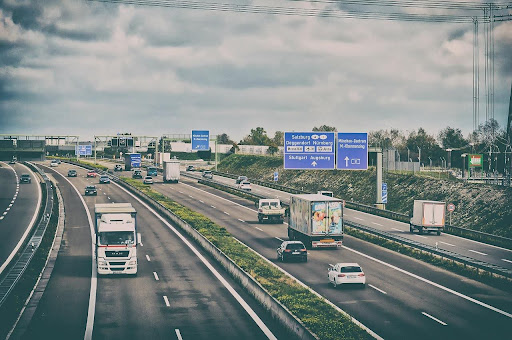Ever felt like your business is stuck in traffic (quite literally sometimes)? Many delivery businesses deal with the problem of finding the best routes and shortening time wasted in traffic. The good news is that integrating technology solutions can be the right path to success.
We’re not talking just about equipping your vans with the latest GPS – technology nowadays can create an entire digital ecosystem designed to streamline logistics and ensure every package gets where it needs to go while keeping customer satisfaction high.
You’ll find practical insights on using technology for better route planning and delivery management in this article. Grab your coffee, sit back, and read along as we explore how technology transforms routing systems into well-oiled machines ready for whatever the road throws their way.
The Best Tools for Routing and Delivery Management
Today’s software solutions have revolutionized the logistics landscape, making routing smarter and more intuitive. For instance, we now have tools that provide intelligent mapping based on traffic patterns and customer preferences.
On the other hand, if you want to keep an eye on your fleet, you have IoT-powered vehicle tracking systems that offer live updates on vehicle locations, ensuring drivers stay efficient while minimizing downtime.
You can also benefit from cloud-based platforms that allow you to handle everything from scheduling to driver communication in one place, offering flexibility no matter where you or your team are working from.
Some of the best delivery management software solutions also send precise ETAs and notifications to customers. This keeps customers informed every step of the way with predictive alerts tailored to their needs.
These digital solutions not only optimize routes but also boost overall productivity in today’s fast-paced world. So, any business interested in growing its operations will be able to maintain a competitive edge by simply integrating the right tools.
Leveraging IoT Sensors to Improve Fleet Efficiency
Even though it sounds like some fancy tech that’s used mainly by big delivery companies, IoT (internet of things) sensors are readily available for small-sized businesses as well.
Consider a basic GPS sensor system for your vehicles. It provides real-time data on location and routes, helping you manage deliveries more efficiently. No more unnecessary detours or delays—you’ll know exactly where each vehicle is at all times.
Add fuel sensors into the mix, and suddenly, you’re monitoring consumption in detail. This insight helps drivers adopt better driving habits to conserve fuel. Think of it like getting instant feedback on your gas bill every day!
Temperature sensors are another great option if you’re dealing with perishables or sensitive goods. These devices ensure conditions remain optimal during transport, preventing spoilage and maintaining product quality.
IoT tools are on the rise, and experts expect them to revolutionize urban living. So, by integrating this type of technology now, you may gain an invaluable competitive advantage for what’s to come. Plus, the upfront investment often pays off quickly through reduced waste and improved service reliability.
Harnessing AI for Dynamic Route Adjustments
AI-driven dynamic route adjustments are game-changers for small delivery businesses aiming to stay nimble and efficient. Imagine you’re stuck in traffic, but instead of waiting it out, an AI system recalibrates your route, keeping deliveries on track.
Tools like OptimoRoute use AI algorithms to analyze current traffic data alongside historical patterns. They then craft the best routes for your drivers in real-time, minimizing delays. It’s like having a savvy navigator who never takes their eyes off the road conditions.
You don’t need a tech team to set these up either; many solutions offer user-friendly interfaces with straightforward integration processes. Simply input your delivery points and watch as AI does the heavy lifting by planning routes that save time and fuel costs.
Even better, some platforms can adjust schedules based on order priorities or customer availability, ensuring that critical deliveries take precedence without manual juggling from you or your staff.
This integration is not just about smoothing out operations. It also equips small businesses with big-business capabilities at a fraction of the cost.
Wrap Up
The best thing you can do to stay ahead in delivery logistics is to find the right tools for your needs. Tools like dynamic AI-driven route planners and IoT sensor systems elevate operational efficiency without heavy investments.
These technologies transform how you manage fleets, ensuring timely deliveries and customer satisfaction. As tech continues evolving, adapting now equips your business with resilience against future challenges, paving the way for sustainable growth in an ever-competitive landscape.






